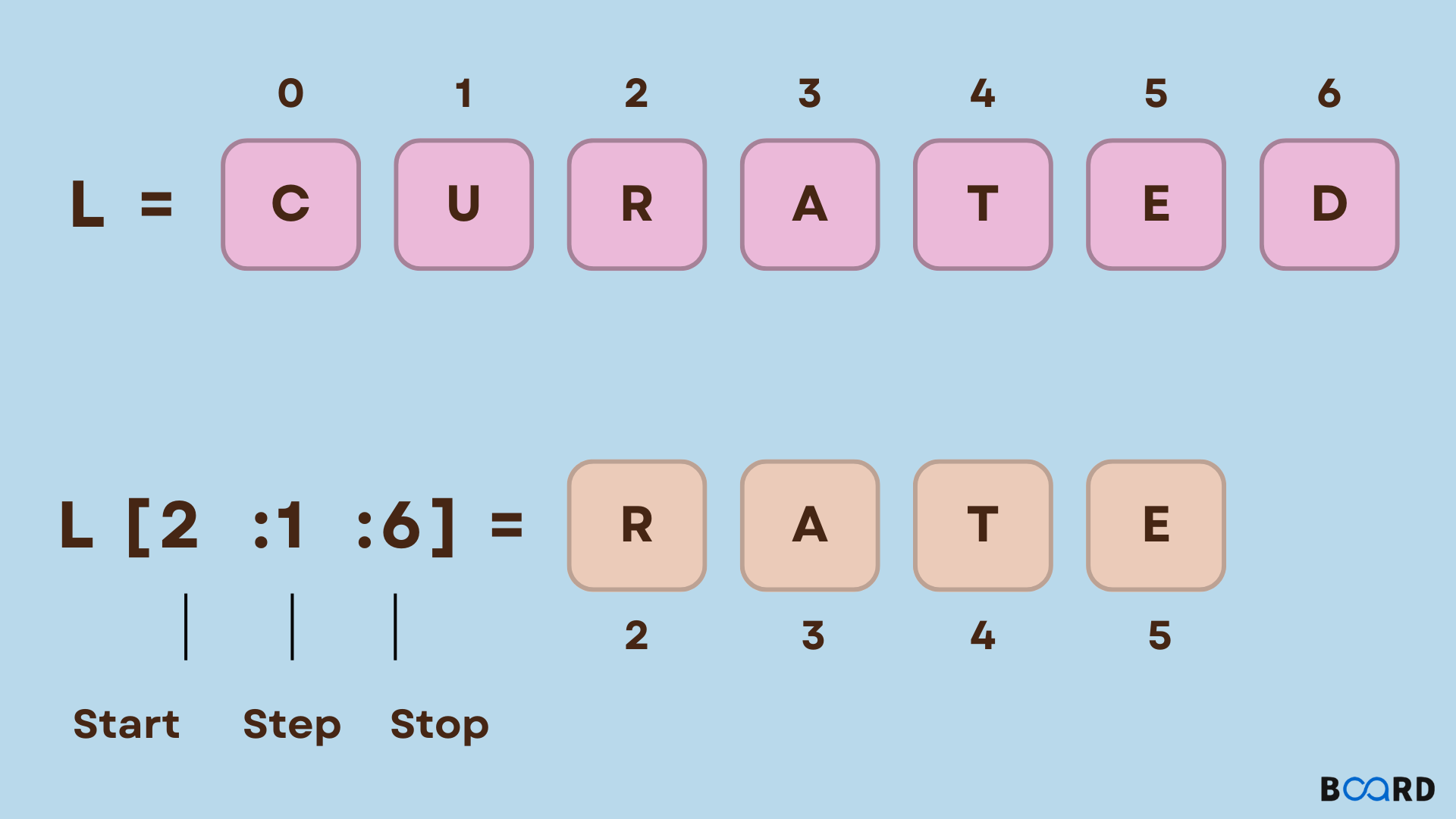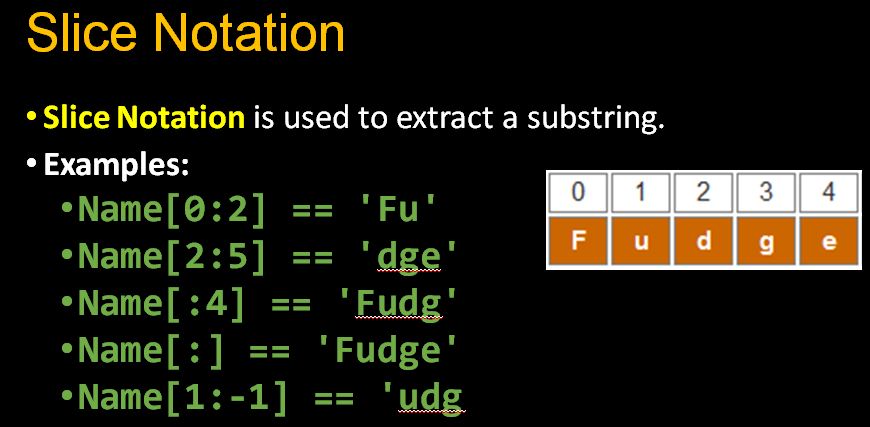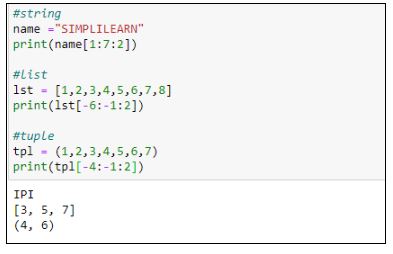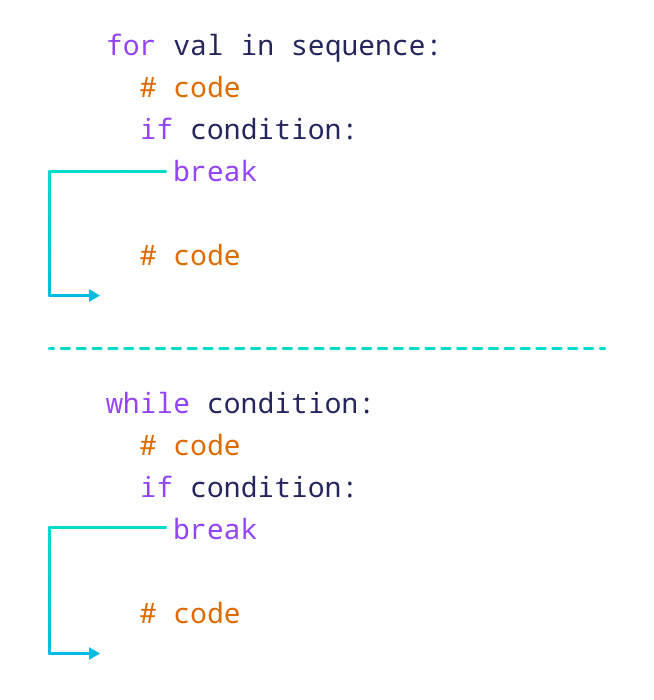How slicing is used in Python?
How slicing is used in Python?

I'd be happy to explain how slicing is used in Python!
Slicing is a fundamental concept in Python programming that allows you to extract specific parts of a sequence (such as strings, lists, or tuples) into a new sequence. This powerful feature enables developers to manipulate data structures in various ways, making coding more efficient and fun.

The Basics

In Python, slicing is denoted by using square brackets ([]) and the syntax sequence[start:stop:step]. Here's what each part means:
sequence: The original sequence you want to slice from (e.g., string, list, or tuple). start: The starting index of the slice (inclusive). If omitted, it defaults to 0. stop: The ending index of the slice (exclusive). If omitted, it defaults to the end of the sequence. step: The increment between elements in the sliced sequence (default is 1).
Basic Slicing Examples
Let's start with some simple examples:
my_list = [1, 2, 3, 4, 5]
Get the first two elements
print(my_list[:2]) # Output: [1, 2]
Get all elements from index 1 to 3 (exclusive)
print(my_list[1:3]) # Output: [2, 3]
Get every other element starting from index 0
print(my_list[::2]) # Output: [1, 3, 5]
As you can see, slicing is quite flexible and allows for various manipulations.
Advanced Slicing Techniques
Now that we've covered the basics, let's dive into some more advanced techniques:
Negative indices: You can use negative indices to start counting from the end of the sequence.my_list = [1, 2, 3, 4, 5]
print(my_list[-2:]) # Output: [4, 5]
my_list = ['a', 'b', 'c', 'd', 'e']
print(my_list[::3]) # Output: ['a', 'c', 'e']
my_list = [1, 2, 3, 4, 5]
my_list[1:3] = ['x', 'y'] # Replace indices 1 to 2 with 'x' and 'y'
print(my_list) # Output: [1, 'x', 'y', 4, 5]
Conclusion
Slicing is a powerful tool in Python that enables developers to manipulate sequences in various ways. By mastering slicing techniques, you'll be able to extract specific parts of data structures, update sequences, and create new sequences from existing ones. With practice, you'll become more proficient in using slicing to solve problems and optimize your code.
So, there you have it! I hope this explanation has been helpful and informative.
How to break out of a while loop in Python?

I'm happy to help you with that! Breaking out of a while loop in Python can be done using several methods, and I'll cover them all below.
Method 1: Using the break Statement
The most straightforward way to break out of a while loop is by using the break statement. This statement is used to exit the loop immediately. When the code execution reaches the break statement, it will stop executing the rest of the loop and continue with the next line of code.
Here's an example:
i = 0
while i < 5:
print(f"Iteration {i}")
if i == 3:
break
i += 1

print("Loop exited!")
In this example, when i reaches 3, the loop is broken and the execution jumps to the next line of code, which prints "Loop exited!".
Method 2: Using the continue Statement
Another way to exit a while loop is by using the continue statement. This statement will skip the rest of the current iteration and continue with the next one. If you want to stop the loop entirely, you would need to use a conditional check to break out of the loop.
Here's an example:
i = 0
while i < 5:
if i == 3:
print("Breaking out!")
break
else:
print(f"Iteration {i}")
continue
print("Loop exited!")
In this case, when i reaches 3, the loop prints "Breaking out!" and then exits using the break statement.
Method 3: Using a Conditional Check
You can also break out of a while loop by using a conditional check that always returns False. This will stop the loop execution. However, this is less efficient than using the break or continue statements.
Here's an example:
i = 0
while i < 5 and True:
print(f"Iteration {i}")
i += 1
print("Loop exited!")
In this case, since the condition True is always True, the loop will never execute again.
Best Practices
When breaking out of a while loop, keep in mind these best practices:
break when you want to exit the loop immediately. Use continue when you want to skip the rest of the current iteration. Avoid using unconditional breaks (e.g., i = 0; while True: ... break) as they can make your code harder to understand and maintain.
In conclusion, breaking out of a while loop in Python can be done using the break, continue, or conditional check methods. Always consider the context and purpose of your code when choosing which method to use.





























